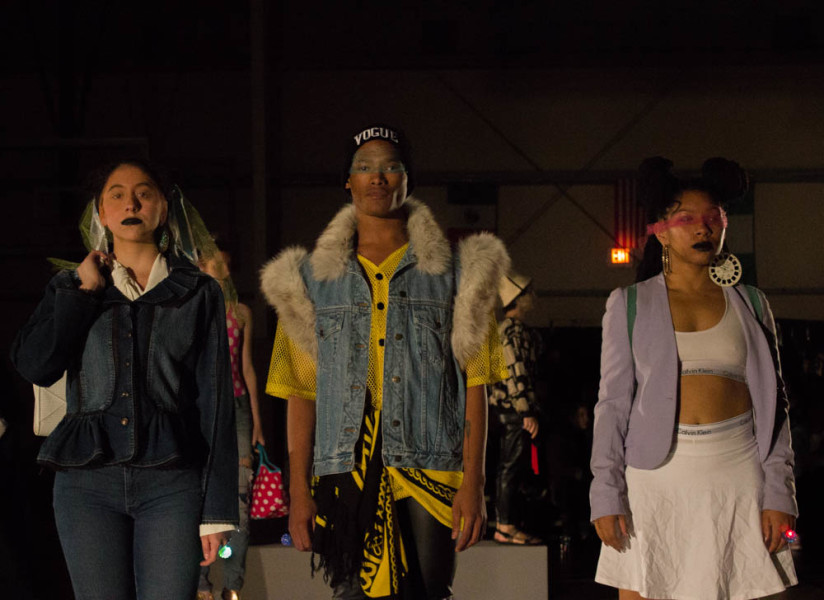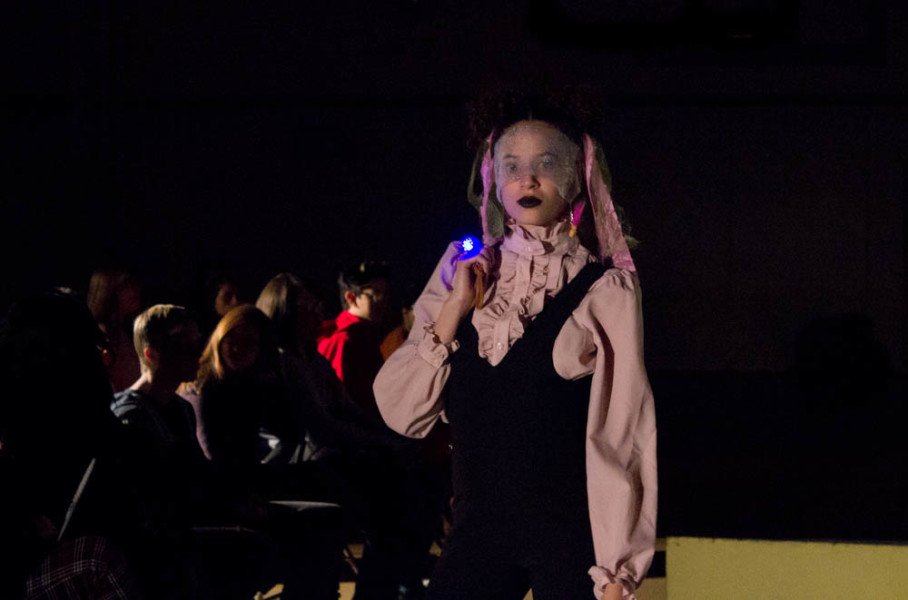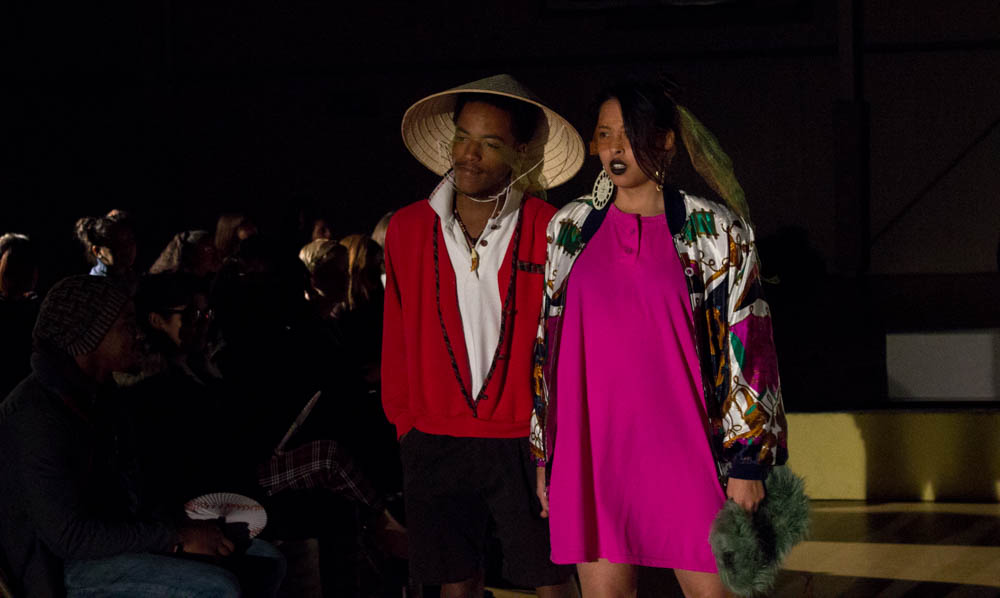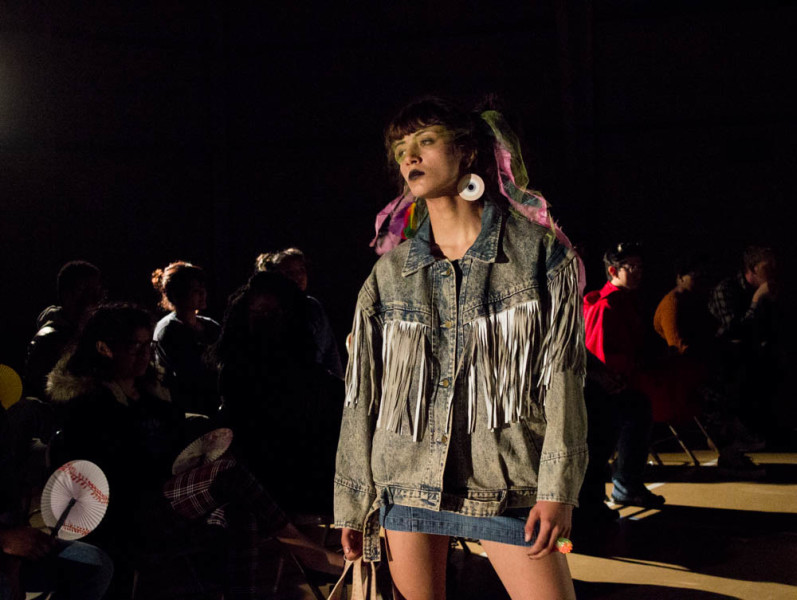Tags
Related Posts
Share This
Tokyo Fashion Show
Two spotlights beamed down on the Driscoll Fitness Center basketball court as audience members waited for the Nov. 6 “Tokyo” fashion show. Bubbles drifted through the dimmed space as attendees blew them with the bottles provided. The packed seats were full of murmurs of anticipation for what the models would be wearing. As the music faded away, Josiah Noray stepped onto one of the giant blocks that outlined the catwalk to welcome students and faculty to the show. Moments later, the first models strutted into the scene to an eruption of applause. While the show only lasted 15 minutes or so, it was a compelling feature of some of SFUAD’s best fashion talents.
The theme of the show was Tokyo Street Fashion, a genre known for its bright neon colors and unique accessories. Two by two, models walked onto the catwalk, around the colored blocks on the floor and off the floor to the opposite direction from which they came. Models wore transparent ribbons over their eyes and in their high-bun pigtails, while sporting both funky and more traditional inspired clothing. There was a roar of applause from the audience as each model came onto the floor, everyone cheering on their friends that were in the show. Each of the 20 models showcased two different outfits before ending the show by stepping onto the blocks and posing.
“Tokyo Street Fashion is something I’ve followed since high school,” said show producer Keynan Johnson. “There are so many different niches of that one specific fashion genre that it was kind of easy to decide [that] it was a street fashion show. They have like 20 subcultures in that one genre,” he explained, saying that it was an easy genre to use because it allowed the producers a lot of freedom in what they chose to showcase.

Keynan Johnson and Cynie Smith-McCarthy put the whole fall fashion show, Tokyo, together. Photo by Kyleigh Carter.
“All of the clothes came from thrift stores and our own closets,” said Tokyo model and 1905 fashion magazine editor Darnell Thomas during the meet and greet following the show. Show producers Cydnie Smith-McCarthy and Johnson went all over Santa Fe looking for clothes to make their show a reality. Shops featured were Goodwill, The Salvation Army, Look What the Cat Dragged In and The Hospice Center Thrift Store.
“They’re really nice and willing to help students,” Smith-McCarthy said of the thrift stores. “I advise anyone to use their stores for something like [Tokyo, or] to put any kind of looks together,” she went on to say. The show borrowed clothes from the shops, promising to take care of them and return them in good condition. While the show didn’t explicitly function as an advertisement for the shops, it was a good way to get the word out to students on campus about where to buy cheap, stylish clothes.
“Lately it seems like the campus is building a fashion community without having a fashion major,” Johnson said. “I think that all the people who are interested in fashion should definitely reach out to the thrift stores and consignment shops around town.”
While Smith-McCartny and Johnson haven’t decided what the theme of their next show will be, they plan to have model calls when classes resume in January. Those interested should look out for posters announcing the call or contact either Smith-McCartny or Johnson directly. “Practise those walks over winter break, folks!” Johnson said with a laugh.










 Jackalope Magazine is the student magazine of Santa Fe University of Art and Design. Building on the interdisciplinary nature of our education, we aim to showcase the talent of our university and character of our city.
Jackalope Magazine is the student magazine of Santa Fe University of Art and Design. Building on the interdisciplinary nature of our education, we aim to showcase the talent of our university and character of our city.
Recent Comments